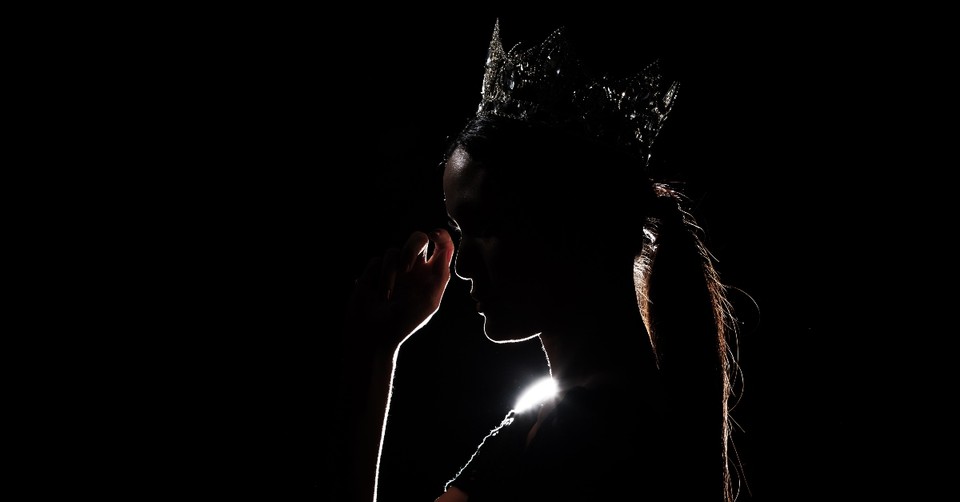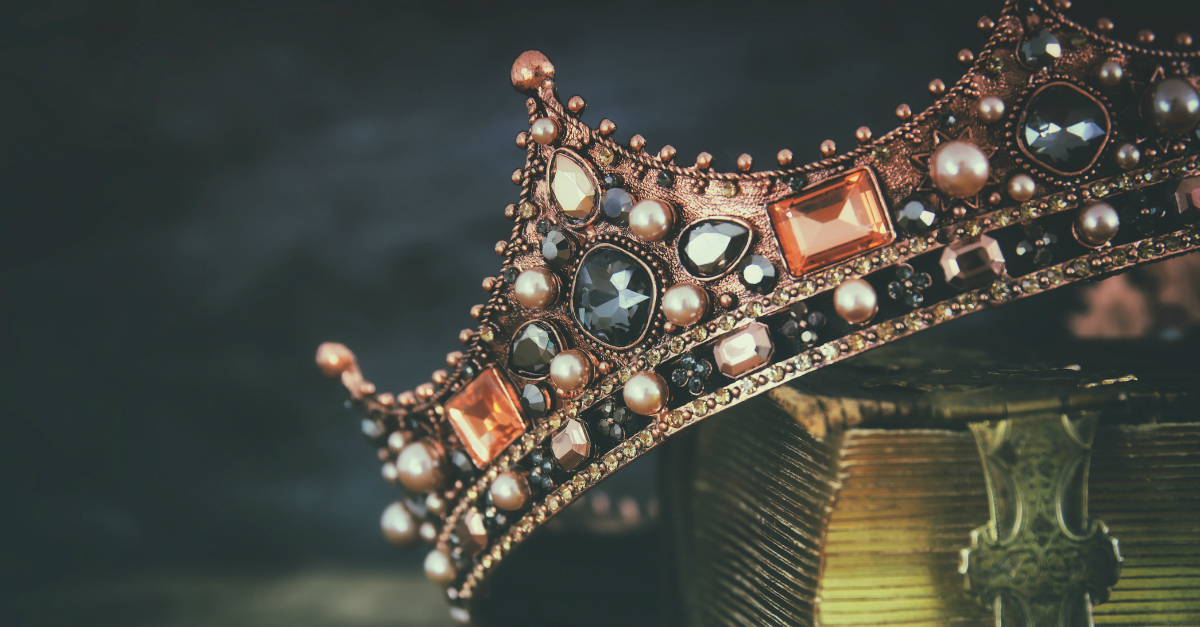Who Is the Queen of Heaven?

“Why is Mary in the Old Testament?”
I was a bit confused by the question. The question came from a man who’d been attending a Baptist church for some time but had a Roman Catholic background. He said that he was reading Jeremiah, and there was a mention of Mary in there, and he was confused.
We looked it up and, sure enough, found a mention of the Queen of Heaven in Jeremiah 7. And a bit further study led to another reference in Jeremiah 44. Who is the Queen of Heaven mentioned there? Is it a reference to Mary?
Why Do Roman Catholics Call Mary ‘Queen of Heaven’?
Before tackling the reference in Jeremiah, it will be helpful to understand why Roman Catholics believe that Mary is to be considered the Queen of Heaven. It goes back first to the Old Testament. In ancient Judah, the kings made their mothers the queen instead of their wives. At least we see this with Solomon (1 Kings 2:19). From this position, Bathsheba made requests of the King, her son. Jesus, then, would place his mother on the throne as the Queen of Heaven.
This is how Pius XII explained it:
He, the Son of God, reflects on His heavenly Mother the glory, the majesty, and the dominion of His kingship, for, having been associated to the King of Martyrs in the ... work of human Redemption as Mother and cooperator, she remains forever associated to Him, with a practically unlimited power, in the distribution of the graces which flow from the Redemption. Jesus is King throughout all eternity by nature and by right of conquest: through Him, with Him, and subordinate to Him, Mary is Queen by grace, by divine relationship, by right of conquest, and by singular choice [of the Father]. (Our Lady in Doctrine and Devotion)
From here, many will connect Revelation 12 to a picture of Mary. The woman who is the mother of the child rules of the whole earth with a rod of iron, and she is crowned with stars and has many moons under her feet. This, they say, is a picture of Mary as the Queen of Heaven.
Historically, references to Mary as “queen” is relatively early. The earliest usage of this term is from St. Ephrem in the fourth century. He refers to Mary as “Lady” as well as “Queen” when he says, “Majestic and Heavenly Maid, Lady, Queen, protect and keep me under your wing lest Satan the sower of destruction glory over me, lest my wicked foe be victorious against me.”
From a Roman Catholic perspective, then, Mary when she went to heaven took a place alongside King Jesus as the Queen of Heaven. It is from here that she will make requests of her Son, the King.
Who Is the Queen of Heaven in Jeremiah?
We now turn to Jeremiah to understand who this is referencing. The first occurrence of the queen of heaven is in Jeremiah 7:18. As the prophet Jeremiah is expressing disdain for idolatry across the land, he mentions the practice of many of the women. “…the women knead dough to make cakes for the queen of heaven…” In this context, his point is that worshipping other gods has become a family practice. The entire family is devoted to pagan worship.
The second mention is in Jeremiah 44:15-26. Here the horrors of idolatry are more explicitly stated. At this point, they are in exile. Things are going horribly for them. But rather than turning back to God to be their refuge, they come to the conclusion that the problem was that they had forsaken the queen of heaven—a fertility goddess. So, instead of repenting and turning to the living God, they decided to renew their covenant vows with the Queen of Heaven.
But which pagan goddess is this to be identified with? Scholars are somewhat divided on which specific pagan deity this is referencing. Many opt for the Canaanite goddess Astarte (Ashtoreth) or the Mesopotamian goddess Ishtar.
If it is to be identified as Ishtar, this is a profile of how she was worshipped:
Ishtar was the principle deity in the Mesopotamian religious sphere. She was worshipped by the Assyrians and Babylonians, and featured very prominent in the cities of Nineveh, Uruk, and Arbela. She is typically depicted in the ancient literature as a of goddess of love and sexuality but also of warfare. The Mesopotamian legend, Epic of Gilamesh records the hero Gilgamesh demeaning Ishtar for the mistreatment of her lovers.
The other leading candidate is Astarte or Ashtoreth. Her cult worshipped similarly to Ishtar. She, too, was a goddess of war and sexual love. She was worshiped in Egypt and in Canaan. This, from Brittanica, is informative:
Astarte, also spelled Athtart or Ashtart, the great goddess of the ancient Middle East and chief deity of Tyre, Sidon, and Elat, important Mediterranean seaports. Hebrew scholars now feel that the goddess Ashtoreth mentioned so often in the Bible is a deliberate conflation of the Greek name Astarte and the Hebrew word boshet, “shame,” indicating the Hebrews’ contempt for her cult. Ashtaroth, the plural form of the goddess’s name in Hebrew, became a general term denoting goddesses and paganism.
We cannot be definitive on the identification. It’s possible that the Queen of Heaven is a blend of these goddesses. Personally, I would lead toward it being Astart or Ashtoreth because it was these particular cult places that were destroyed by Josiah during the reforms. It would fit within the context of Jeremiah 44 to have these women (and whole families) upset that worship of their favorite goddess was banned, and then trouble began. But again, we cannot be entirely certain.

Photo Credit: ©GettyImages/Tomertu
Is This a Subtle Condemnation of the Worship of Mary?
Protestants, like myself, might be quick to combine these two points. The ancient Judahites worshipped a false god, burning incense to her, and making cakes in her honor. Roman Catholics will burn candles and make cakes and cookies in honor of the Virgin Mary. And many Protestants accuse Roman Catholics of worshipping Mary. So, are these connections just a coincidence?
While I freely admit that I am not a Roman Catholic, and I am not convinced that Mary ought to be considered the Queen of Heaven, I do not believe it is appropriate to make this connection. Yes, we can make the argument that one should not engage in idolatry. And we can have a discussion about the difference between veneration and idolatry and whether or not it's fitting to pray to the Virgin Mary. Frankly, I’m incredibly uncomfortable with a prayer like this: “We have no greater help, no greater hope than you, O Most Pure Virgin” ( Novena Prayers in Honor of Our Mother of Perpetual Help). But none of that, in my estimation, belongs in a discussion of Jeremiah 7 or Jeremiah 44.
The context here is clearly the worship of a pagan goddess. It’s not a good reading of Scripture to read a contemporary debate back into a text of Scripture. This isn’t how the Bible works. Yes, the author of Scripture is living. And yes, there are times in which a theme in the Old Testament will have greater fulfillment later on. This is the nature of progressive revelation. But reading Jeremiah 44 as an indictment of a Roman Catholic practice is imposing more on the text than is there.
What is the point of Jeremiah 44? How do we apply this message for today?
The main theme here is about how dedicated to idolatry the human heart can become. We have here a picture of what Paul spoke of in Romans 1. When the people were taken off into exile, what should have happened was an honest self-assessment and deep repentance of idolatry. The people had forsaken YHWH, the one true God, their husband. And they had run off after other lovers.
But rather than considering their idolatry, the spiral of rebellion went even further. In Jeremiah 44, they become even more entrenched in their position. They completely reinterpreted history as if their ills were because of Josiah’s reforms and not because of their pagan worship. They have cast their lot, they have settled in their position. And the sad conclusion is found in Jeremiah 44:26. Where God essentially says, “You’ve made your decision, now live with it. You will no longer be able to call upon me. Ever.”
The wounds are self-inflicted. God offers life and hope and beauty and all that which is good. But the people decided to cast their lot with the Queen of Heaven. It serves as a warning for us. Perhaps the identity of the Queen of Heaven cannot be entirely certain because this principle still exists today. Whenever we place our hope and our trust in anyone or anything other than Christ, our refuge, we’re on dangerous ground. And that point applies whether the Queen of Heaven is Ishtar, Astarte, the Virgin Mary, the almighty dollar, or the presidential chair being filled by a member of our party. Our hope is to be firmly fixed in Christ alone—anything else puts us on the path of self-destruction.
Sources Cited:
Most, William G. "Mary's Queenship," Our Lady in Doctrine and Devotion, 1994
Novena Prayers in Honor of Our Mother of Perpetual Help (Uniontown, PA: Sisters of St. Basil, 1968), p. 16.
Photo Credit: ©iStock/Getty Images Plus/JadeThaiCatwalk
Mike Leake is husband to Nikki and father to Isaiah and Hannah. He is also the lead pastor at Calvary of Neosho, MO. Mike is the author of Torn to Heal and Jesus Is All You Need. His writing home is https://mikeleake.net and you can connect with him on Twitter @mikeleake. Mike has a new writing project at Proverbs4Today.
Originally published August 09, 2023.







